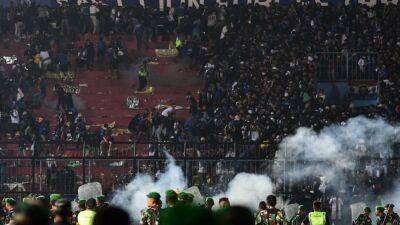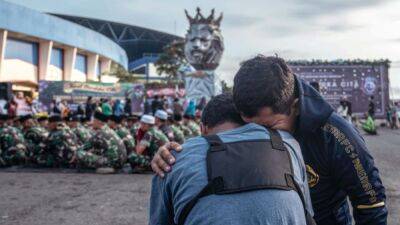Commentary: How did an Indonesia football match end in one of the worst stadium tragedies?
NEWCASTLE, Australia: At least 125 soccer fans have died in Indonesia, and more than 300 have been injured, in what is being reported as one of the worst sports stadium tragedies in history.
The disaster happened on Saturday night at the Kanjuruhan stadium in Malang, East Java. Up to 3,000 fans reportedly streamed onto the pitch following a Premier League game in which Persebaya Surabaya defeated Javanese club Arema 3-2.
Disappointed with the loss, Arema supporters threw bottles and other objects at players and officials before storming the pitch – which eventually led to a deadly stampede. Video footage shows authorities firing tear gas, and armed with batons and shields as they chased fans in an effort to restore order.
I’m an expert on crowd safety, with a specific focus on how to boost safety at large events, including sporting tournaments. Like most tragedies of this nature, the events in Malang appear to tie into a common thread.
News outlets have reported Saturday’s event was filled beyond capacity. According to The Guardian, Indonesia’s chief security minister said 42,000 tickets had been issued for a stadium that holds a maximum of 38,000.
In such a densely packed venue, police’s decision to use tear gas would have only escalated an already confusing and chaotic situation.
Also, the Kanjuruhan stadium only has one exit (which is also the entry). In competitive sporting environments, crowds already have heightened emotions. So it’s not difficult to see how a frenzied crowd rushing through a single exit could lead to death and injury.
These lessons have been learnt previously with the 1989 Hillsborough disaster and the 2010 Love Parade disaster (to name a few) – where a combination of police actions, poor communication,





